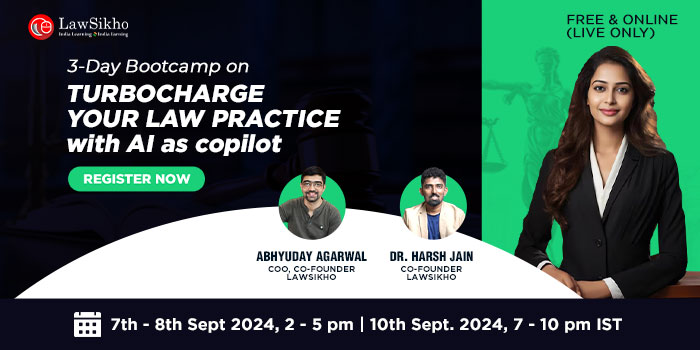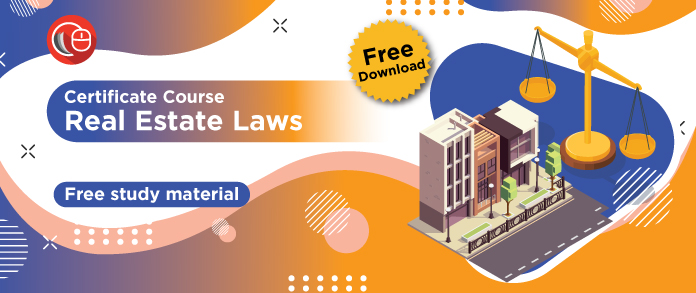This article is written by Souradh C.Valson from Government Law College Thiruvananthapuram, and discusses the concept of locus standi and the development of Public Interest Litigation in India.
Table of Contents
Introduction
Public Interest Litigation is the remedy available before the courts for redressal and enforcement of rights of a community. Human rights gained global recognition after the United Nations Declaration of Human Rights. Enforcement of Human rights is the most important subject of discussions and debates around the world because many people suffer due to a lack of basic needs. This issue does not belong to one country alone but is a global issue and requires cooperative efforts to solve.
History
In earlier times, litigation was a costly affair in India. Only private individuals pursued litigation for the enforcement of their rights or to defend their interests. This process involved the aggrieved party filing a suit or initiating an action against the wrongdoer for redressing their issues and grievances. Therefore, individuals opted for litigation with their limited resources.
There was little to no effort to mitigate or even discuss the grievances and issues faced by certain classes of citizens or even the public at large. The judiciary being the watchdog of the fundamental rights of the citizens, plays a pivotal role in these matters. Reviewing legislation and administrative decisions or actions to ensure and prevent the violation of fundamental rights is the power conferred on the Judiciary.
If any action violates the fundamental right of a citizen, he has to option to file a writ petition before the Supreme Court or a High Court for a remedy. As simple as this may sound the lengthy, and complex process associated with litigation makes it hard if not impossible for the marginalized, and underprivileged to access justice.
To make justice more accessible to all citizens, the Supreme Court accepted the concept of Public Interest Litigation. PIL allowed people from all walks of life to approach courts for enforcing their fundamental rights. Social welfare groups, social activists, and any public-spirited individual could also approach the courts by representing the broader interests of the public.
Locus Standi
Locus Standi means the legal capacity to sue or approach courts. Under both the inquisitorial and adversarial system, the parties approaching the courts must have been aggrieved or deprived of their rights. Thus, in any legal process, the existence of locus standi is necessary.
PIL is different from the usual method of litigation. Locus standi is mandatory in traditional litigation, but a genuine interest or legitimate concern about the issues of the public will act as a substitute for local standi in a PIL.
Therefore, Locus standi is the standing of a person in whom the right to legal action vests. Thus, according to the principle of locus standi, any aggrieved person can approach the courts for a remedy. Locus standi is relaxed and made flexible in a Public Interest Litigation to expand the scope of litigation by considering the rights and issues of the marginalized and underprivileged.
Constitutional provisions
A citizen has the right to approach the Supreme court under Article 32 for the enforcement of their fundamental rights mentioned under Part III of the Constitution. Article 32 is remarked as the heart and soul of the Constitution. The rights under part III would be meaningless if they cannot be enforced.
The Supreme court can declare a law ultra vires if it is inconsistent with the rights mentioned under part III. The Supreme court can issue orders or directions or writs such as habeas corpus, certiorari, mandamus, prohibition, quo warranto to enforce the rights of the citizens.
Similar jurisdiction is also conferred to the High courts under Article 226 to issue writs or directions or orders for the enforcement of fundamental rights. A citizen can avail of Article 32 only if there is a violation of a fundamental right. However, Article 226 is available not only for the enforcement of fundamental rights but also for other purposes. Therefore, the power under Article 32 is more restricted than the powers under Article 226.
So, citizens can file a PIL before the Supreme Court under Article 32 or before the High Court under Article 226. The aggrieved party need not appear before the court to enforce the right under Article 32. The court has the power to suo motu take cognizance in any matter and proceed with it. Moreover, the courts also have the power to treat any case with private interest as a publicly interesting case.
Also, under Article 39A the states must ensure that the operation of the legal system upholds justice and fairness equally to all citizens and the establishment and working of services that provide free legal aid to economic and socially backward citizens. The state can also pass legislation to ensure this. Thus, the crux of Article 39A also mandates PIL, which also seeks justice equally for everyone.
Important cases relating to PIL in India
-
Vishaka v State of Rajasthan
This case played a crucial role in influencing the Parliament to enact the Sexual Harassment at Workplace Ac, 2013. In this case, a social activist was gang-raped for vengeance. All the accused were acquitted by the trial court. The state applied for a petition to the Supreme court under the name Vishaka. The court laid down the guidelines to follow in workplaces to prevent sexual harassment.
-
Fertilizer Corp. Kamnagar Union v Union of India
In this case, the court held that; when the power of bureaucracy increases, misuse of legal standing is inevitable. The only solution is the expansion and flexibility of locus standi to expand the scope of justice.
-
Mumbai Kamgar Sabha v Abdul Thai
In this case, the issue was the payment of bonuses to workers in an industry. Justice V.R Krishna Iyer rightfully held that; the right to approach courts when similar individual rights of several people are infringed is the appropriate remedy in our socio-economic context.
-
Hussainara Khatoon v State of Bihar
This case dealt with the harsh conditions of prisons and under trial prisoners. An advocate filed a petition under Article 32 describing the poor condition of undertrial prisoners and their inability to safeguard their personal liberties. The court held that the right to a speedy trial is a part of the right to life under Article 21.
-
S.P Gupta v Union of India
A group of lawyers filed a writ petition under Article 226 of the Constitution regarding the appointment of judges. The petition was allowed as the lawyers had a genuine interest in the disposal of cases and appointment of judges. This case opened up a new era for public interest litigation in India. PIL became one of the most effective tools to enforce public duty, which was earlier executed illegally, thereby causing injury to society.
-
Bandhua Mukti Morcha v Union of India
In this case, an organization for bonded labourers filed a petition before the Supreme Court to release bonded labourers. The court distinguished PIL from adversary litigation and stated the objective of PIL is to allow the government to make fundamental rights meaningful according to the Constitution.
-
People’s Union for Democratic Rights v Union of India
In this case, an organization dedicated to secure the rights brought a writ petition under Article 32 complaining about the violations of labour laws during the construction of stadiums for the Asiad project. Justice P.N Bhagwati stated that a PIL is filed to enforce the rights of a class of persons whose fundamental rights are violated, as opposed to ordinary litigation where only the rights of an individual are considered.
In recent times, the scope of PIL has expanded and is still expanding. PIL is now not only a tool for addressing the issues of the poor and marginalized but also for addressing social issues. However, under the traditional definition of locus standi, problems and issues of public importance were not enforceable in a court of law.
Currently, PIL deals with a wide variety of issues such as administrative problems affecting society, socio-economic problems, abuse of power by authorities, labour rights, and problems relating to the environment.
Although the object of a PIL is for addressing the concerns about the public, individuals use PIL as a cover to accomplish their selfish goals. The petitioner must act in good faith, keeping in mind the interest of the public and not to attain his political, economic, or personal motives. The Supreme Court has repeatedly warned that PIL must be used with care and caution. The courts may refuse to accept a PIL if there is an unreasonable delay in filing it. Public Interest Litigation continues to flourish in India due to the irresponsibility and lack of accountability by the government.
Scope of Public Interest Litigation in India
Initially, only petitions relating to habeas corpus were recognized as the subject matter of PIL. Now the scope of PIL extends to many issues of public importance such as:
- Child abuse and child labour
- Cases of neglected children
- Bonded labour cases
- Atrocities against woman, rape cases, kidnapping and murder
- Refusal to pay minimum wages to workmen
- Persecution of the socially and economically backward sections of the society – especially children and women
- Complaints against police
- Cases relating to environmental protection
Drawbacks of PIL
- Misusing PIL and filing trivial petitions to accomplish the selfish and personal motives of individuals. Courts have made it clear that it is not personal interest litigation but litigation for the benefit of the public.
- Unreasonable delay in disposal of matters of the poor, needy, and economically backward defeats the purpose of PIL.
- The courts may overlook the problem of competing rights. For example, if a court orders the closing of a polluting chemical factory, it will infringe on the rights of workers in the factory due to loss of livelihood.
- While determining issues of socio-economic importance or environmental problems, there is a chance that courts may inadvertently commit judicial overreach through PILs.
- With an expansion in the meaning of locus standi, many people file public interest litigation for various purposes, which leads to overburdening the courts with cases.
Critical analysis
Public Interest Litigation is the result of judicial activism. The only objective behind public interest litigation is to make the judiciary more responsive to the needs of the section of society that usually cannot approach the courts to redress their grievances. The judiciary acts as a guard for the society through this change. The legislature usually deals with problems that are separated from the masses and not connected with the welfare of common people.
Public Interest Litigation has significantly contributed to the enforcement and protection of rights that were usually overlooked and prevented the misuse of justice. PIL is necessary for the Indian context, which is ridden with injustice. At its inception, PIL was used as a tool against persecution. Subsequently, there was a huge inflow of trivial cases, but it should be seen as progress because it is aimed at producing results at an affordable rate.
Although PIL has many benefits, the courts must be cautious to prevent private interest through PILs. Judiciary shouldn’t use public interest litigation to encroach the fields of executive and legislature. The challenge faced by courts is in finding a balance between accepting a legitimate public concern while rejecting the trivial ones. A way to ensure this is by setting up some economic disincentives and only hearing cases that are primarily barred by a disability.
Conclusion
Public Interest Litigation, otherwise known as Class Litigation or Social Action litigation, is different from the normal mode of litigation. The main objective of PIL is to deliver justice to those who wouldn’t normally be able to access it. The rule of locus standi has undergone radical changes to make it more flexible. Now, any socially spirited person can file a PIL representing the grievances or issues of a socially or economically backward community.With the evolution and developments of PIL, accountability, and attitude of the government towards the rights of weaker sections have seen drastic improvements. The relaxed rule of locus standi and the betterment of government accountability towards the weaker sections have made PIL one the most important and effective tool for social change and to validate the Rule of Law as mentioned under Article 14.
References
- https://lexlife.in/2020/05/18/public-interest-litigation-pil/
- https://lawcirca.com/public-interest-litigation-genesis-and-evolution
- http://www.legalserviceindia.com/article/l273-Public-Interest-Litigation.html
LawSikho has created a telegram group for exchanging legal knowledge, referrals and various opportunities. You can click on this link and join:













